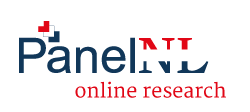THE COMING OF AGE OF PANELS
In the seven years since the creation of the quality standard ISO 26362, the use of online panels for market, opinion and social research has experienced massive growth but standards must be kept up to date.
The ISO 26362 standard was extremely useful in helping both clients and vendors explain and understand the technical aspects of what is now a ‘traditional’ online panel. And while online panels are now default sample sources for many researchers, new options that must also be considered have been developed since then.
In the online world, we have seen the introduction of panels that use not ‘traditional’ email invitations. Rather options such as pop-up intercepts, or requiring people to visit a specific website and select from available research opportunities, or offering opportunities from pre-rollwebpages have appeared. So, we have to consider whether automated inventory and survey routing is appropriate for our needs. And of course, we now we have the option to engage panel and sample brokers who will find sample providers for us.
The great success of online sample led to the decline of offline sample in rich areas of the world. But don’t let that fool you. There still exist large communities of people around the world where access to online services, or financial resources, means that advanced online surveys are simply not feasible. Offline panels are still very necessary and important in many communities and for many types of research.
And, what may seem surprising to some is that, now, in both offline and online environments, we must consider whether the sample or panel has probability or nonprobability characteristics.
In the time that our sector has greatly advanced researchers’ capabilities, people have also advanced in their responses to surveys. For some, answering surveys is now a normal activity, many participate in one or more panels, in addition to innumerable surveys from ad hoc outreach programmes and end-client research studies. Participants are more familiar than ever with techniques for increasing their chances of qualifying for incentives, as well as techniques for completing surveys as quickly as possible, sometimes with less than good intentions and sometimes as a reaction to poor quality research tools and services.
It is clear that we have reached a new stage with samples where both offline and online sample have been accepted as valid and reliable techniques, each with a host of new intricate technical requirements.
On March 11 and 12, representatives from around the world, including Canada, UK, USA, The Netherlands, Australia, Japan, Austria, and more, gathered in London, England. They discussed and debated the advancements our industry has made and how we can incorporate those advancements into the ISO standards.
Our goal was to update the online panel standard to better reflect the current and future state of sampling for market, opinion and social research. Also high on the agenda was the new draft ISO standard for digital analytics and web analyses, which aims to develop the service requirements for digital research services.
These leaders also brought to light the global differences in research requirements and practice, to help solidify the wider issue of how the ISO research standards can best serve the research sector well into the future.


